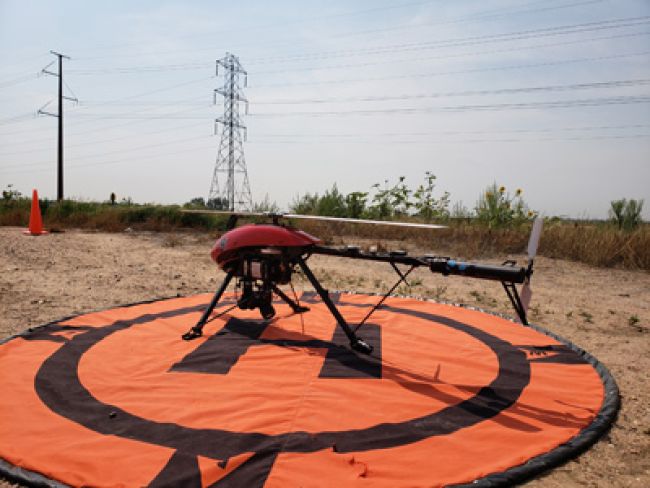
The State of Drones in the North American Utility Market
Line inspections using helicopters cost about $1,500 per mile compared to around $200 per mile with a drone. That nearly 90% reduction presents a compelling business case for utility companies to use drones, while also being able to improve safety by putting fewer lineworkers and helicopter pilots in harm’s way.
But drone sales in the North American utility market are still meager, projected to reach only about $1.5 million in 2019. Yet that number is expected to grow by nearly 18 times – to $26 million – by 2026, as U.S. regulations ease and drone technology improves, according to Michael Hartnack, a research analyst for Navigant Research covering drones and robotics for transmission and distribution operations worldwide. (For Navigant’s full market report, visit www.navigantresearch.com/reports/drones-and-robotics-for-transmission-and-distribution-operations.)
These numbers represent hardware sales only and not revenue from ancillary drone services – such as piloting, training, software development, data analytics, artificial intelligence, cybersecurity and other support offerings – which will make the overall U.S. utility drone market significantly bigger, Hartnack said.
So, what exactly is the state of drones in the North American utility sector today? What’s holding back widespread adoption of drones? And what are the future possibilities?
The Regulatory Bottleneck
The biggest constraint to drone use by utilities is the Federal Aviation Administration rule that restricts operators to flying drones only within their line of sight. This can make drone inspections impractical because you’re only able to fly over short sections of power lines.
But the FAA is beginning to ease the beyond-visual-line-of-sight (BVLOS) restriction through the use of waivers. For example, last fall, Xcel Energy became the first U.S. utility granted permission from the FAA to launch BVLOS drone flights for ongoing inspections.
“It’s not entirely clear that there is going to be a complete repeal of the beyond-visual-line-of-sight restriction,” Hartnack said. “But I think the direction we’re headed right now is toward an easing of the waiver process in the next two to three years. Every utility program is going to have to get their specific program approved by the FAA, but that waiver process will get easier and faster.”
Flight Time Challenges
However, even when U.S. utilities receive FAA waivers to operate beyond visual line of sight, drone technology still must improve to allow for much longer flight times.
“Typical drones these days with cameras and sensors can fly for only about 20 to 30 minutes with the current battery technology,” Hartnack said.
But when you look at the global drone market, technologies are being developed to keep drones in the air significantly longer per flight.
For example, Doosan Mobility Innovation (www.doosanmobility.com), a subsidiary of Seoul, South Korea-based Doosan Group, is developing drones powered by hydrogen fuel cells for long-distance transmission line inspections. The drones can fly for up to 110 minutes.
“The Doosan hydrogen fuel cell drones that can fly for nearly two hours – that will be a big jump in flight time when they become available,” Hartnack said.
Eye in the Sky with AI
Beyond line inspections, what are some other interesting applications for drones in the utility space?
Hartnack mentioned that in the Asia-Pacific region, utilities are using drones and artificial intelligence to model vegetation growth in an effort to help prevent impacts with transmission lines that might spark forest fires or other hazardous conditions.
“Where are the trees going to grow in a year? How are they going to interact with the power lines? The value here is how much computing we can do in the cloud and how much we can do with AI before we have to get utility personnel involved. That’s where the value of the data is really going,” Hartnack said.
He also noted that in Indonesia and Japan, they’re already flying drones over transmission lines and mapping out their vegetation growth issues. “This way, the utilities can pinpoint the issue and streamline their operations,” Hartnack said. “This saves everybody money and makes their operations much safer.”
Drone Ownership vs. Outsourcing
There’s a lot of specialized expertise required for not only piloting drones but also maintaining them and ensuring that they’re equipped with the latest technology. So, what will utilities be doing in terms of owning their fleet of drones versus leasing or subscribing to drones as a service?
“It’s going to be highly likely that utilities will contract with companies to provide drones as a service,” Hartnack said. “I think that model is ultimately advantageous to the utility business. But right now, utilities are hesitant because of their revenue model and rate-making structure. Yet, at the end of the day, for something like drones, most utilities don’t have the in-house capability.”

